Enhancing Healthcare Education and Patient Experience through Augmented Reality (AR) and Virtual Reality (VR) Technologies: A UX Research Case Study
Stakeholder Partners
The leaders from Jefferson Health and TJU colleges who were involved in the project:
Director, CAESI, Jefferson College of Nursing
Director, Process Development & Operations, Jefferson Institute for Bioprocessing
Senior Associate Provost, Academic Enterprise
VP, Academic Strategy & Planning
01. Introduction
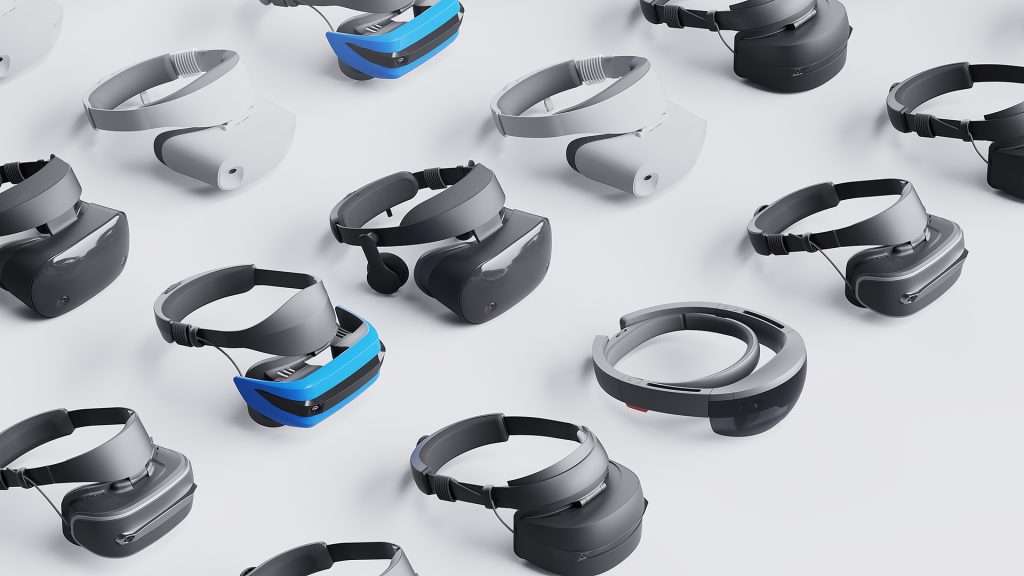
Purpose
The use of augmented reality (AR) and virtual reality (VR) technology in healthcare education has the potential to improve outcomes for students by providing immersive, interactive simulations of real-world situations.
Background
The Digital Learning (DL) Group at Thomas Jefferson University (TJU) is committed to exploring the use of AR and VR technology as a way of delivering next-generation education and helping healthcare professionals deliver seamless patient experiences.
Objective
The DL Group aims to create AR and VR experiences that can improve existing workflows, enhance health professional education, provide patients with more awareness of their medical procedures, and position TJU as a leader in AR and VR healthcare education.
02. Process
Research, problem definition, possible solutions
- Research
- Define business need
- Review technology resources
- Identify possible solutions
- Meet with industry experts
Solutions
- Review solutions with instructor
- Select solution with instructor
Development of solution prototype
- Review prototyping resources
- Develop prototype
- Define business implication
- Create presentation
03. Methodology
Initial Research Design
A mixed-methods research design was used, including both qualitative and quantitative data collection and analysis methods.
This approach allows for a more comprehensive understanding of the research problem by collecting data from multiple sources and using different methods to analyze it.
We created a survey to gather quantitative data on the participants' attitudes towards AR/VR technologies and their potential use in healthcare education and patient experiences.
Qualitative data collection methods such as interviews and focus groups were used to understand the needs of the healthcare professionals and students at TJU, and to gain a better understanding of the participants' needs and preferences.

Sample
The study sample consisted of 50 undergraduate students from healthcare program who were purposively selected to include a mix of genders and academic levels (freshman to senior).
This was done to ensure a diverse representation of the population of interest. Participants were also required to meet specific inclusion criteria such as being enrolled in a healthcare program and providing consent to participate in the study.
The purpose of this approach was to ensure that the study sample is representative of the population of interest, and the results can be more specific and accurate.

User Research
The research was conducted to understand the needs of the healthcare professionals and students at Thomas Jefferson University (TJU).
To conduct the user research, a combination of different methods were used such as:
- Interviews: One-on-one conversations with healthcare professionals and students to gain a deeper understanding of their needs, pain points, and preferences. For example, healthcare professionals were asked about their current workflows and any pain points they faced, and students were asked about their familiarity with AR/VR technologies and their potential uses in healthcare settings.
- Focus Groups: Discussions with a group of healthcare professionals and students on specific topics to gain a better understanding of the participants' needs and preferences. The focus group allowed to delve deeper into specific topics and gain a better understanding of the participants' needs and preferences.
- Surveys: A set of questions were used to gather quantitative data on the participants' attitudes towards AR/VR technologies and their potential use in healthcare education and patient experiences. Surveys helped to gather data from a large number of participants in a short period of time and also helped to gather data from participants who were not able to participate in the interviews and focus groups.
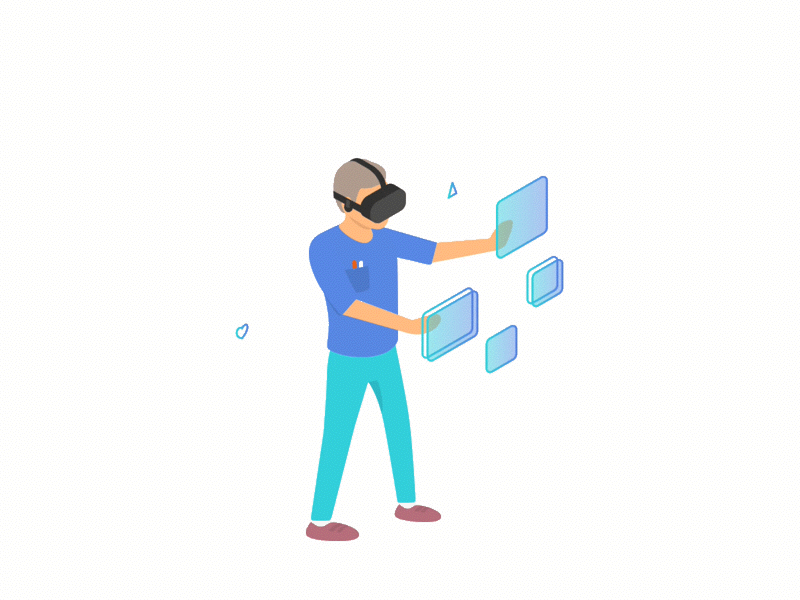
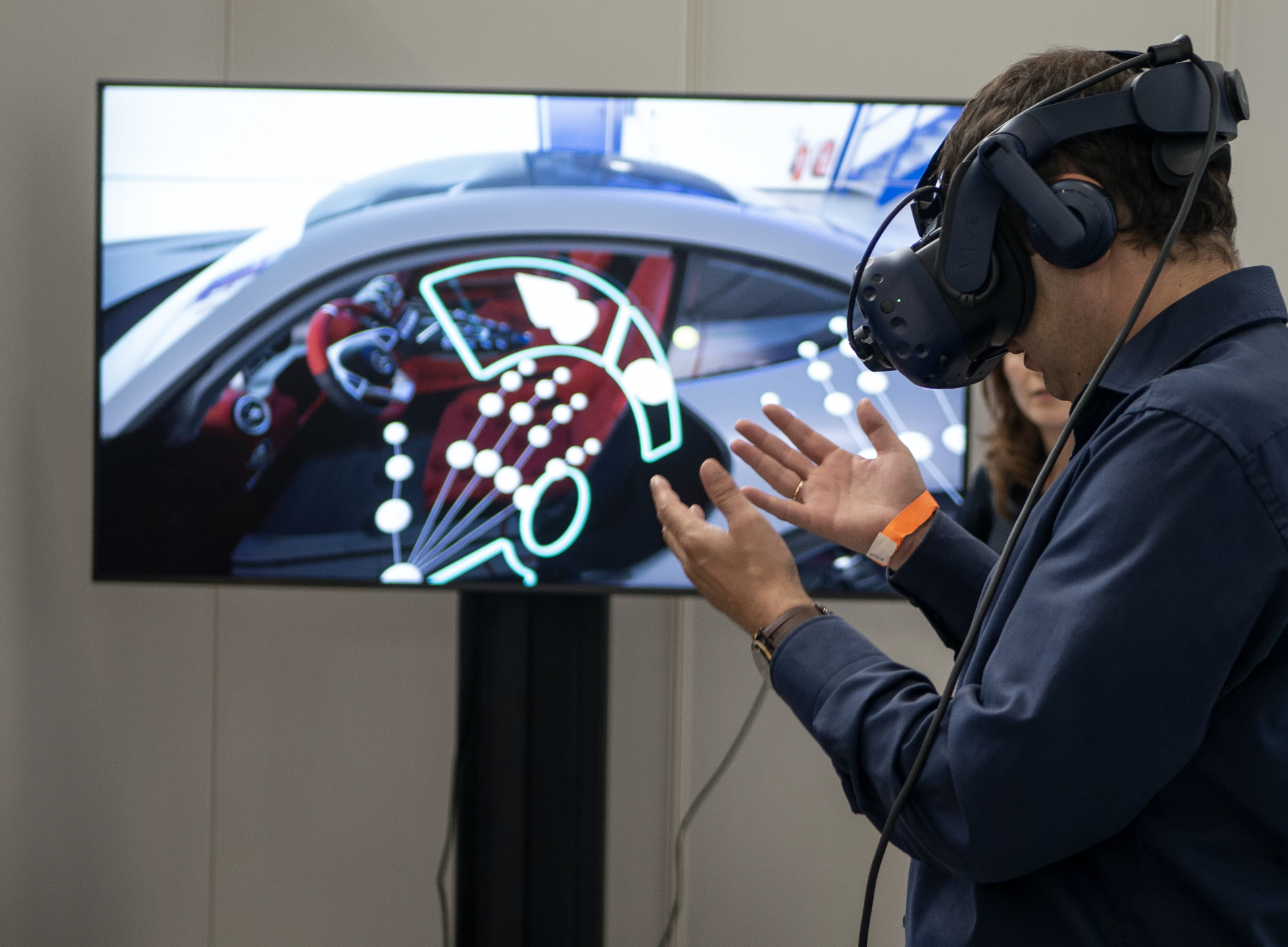
Defining the Business Need
Based on the data, we have determined that the business need is to investigate the possibility of converting stakeholders' XR project concepts into practical solutions by utilizing AR and VR technology in healthcare education and patient experiences.
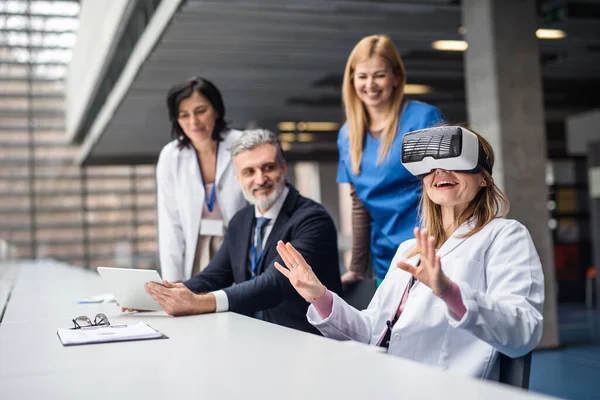
Researching Potential Solutions THIS CAN GO AND MERGE UP
As part of the research, we reviewed technology resources such as academic journals, research papers, and industry reports to understand the current state of the technology and its potential use cases in healthcare settings. This helped us identify potential solutions that could be used to address the business need.
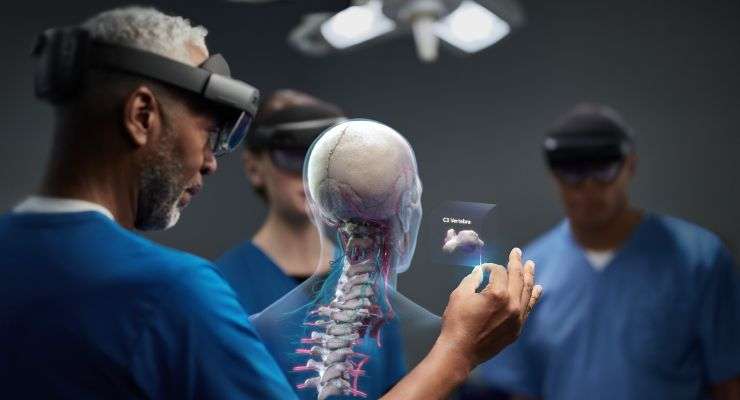
Consultation with Experts
We consulted with a surgeon who has experience using AR in surgical planning and simulation, to gain insights on how the technology could be used in this context, what are the benefits and limitations of this technology, and what are the best practices. Similarly, we also consulted with a technology expert in AR/VR to understand the latest advancements in the technology and its potential future developments.
Overall, researching potential solutions helped us identify and evaluate various options to address the business need and to gain a deeper understanding of the technology and its potential uses in healthcare settings.
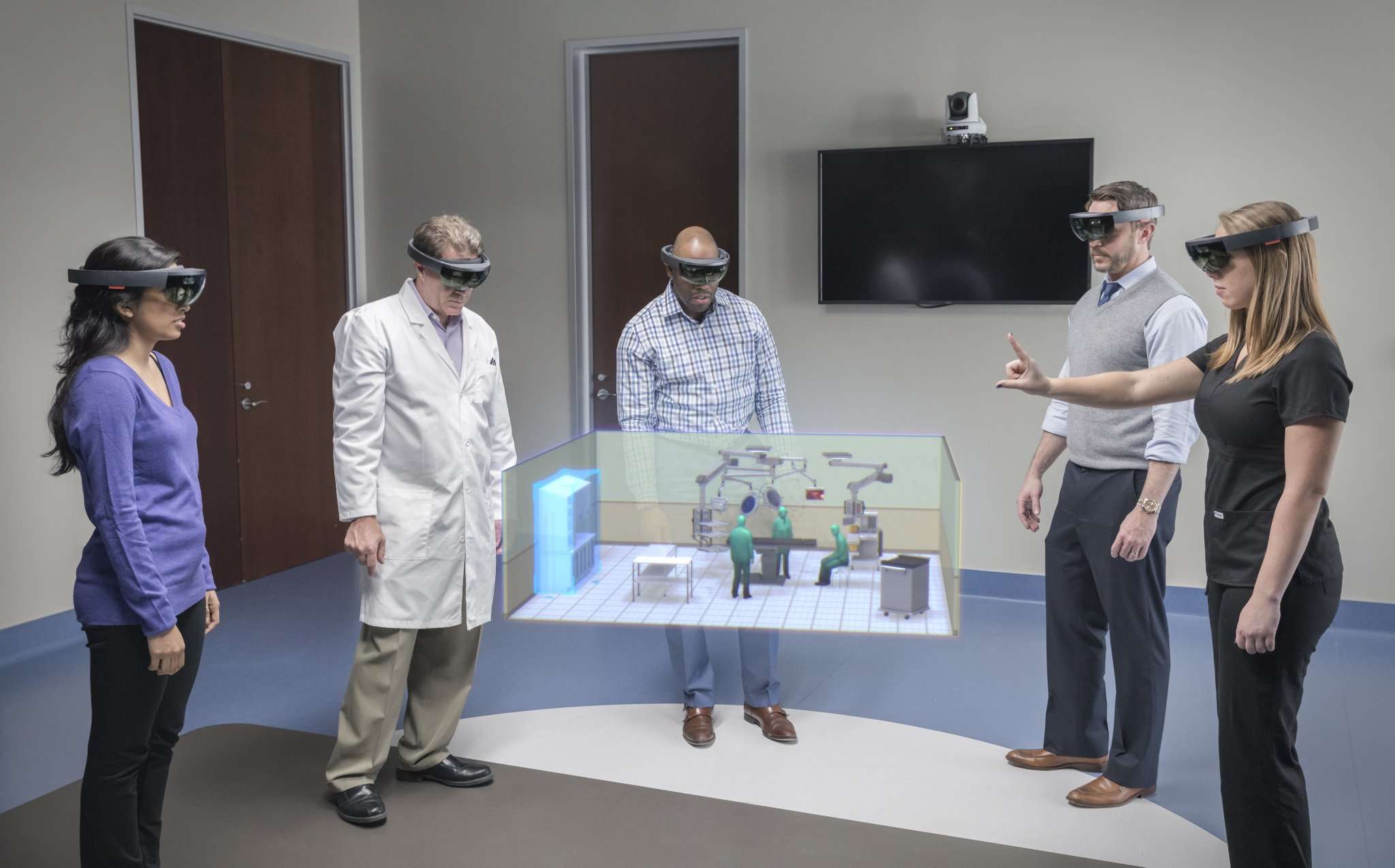
Reviewing Solutions with Stakeholders
We reviewed potential solutions with healthcare professionals and students to ensure that the solutions aligned with their needs and preferences.
The research team presented the potential solutions that they had identified and evaluated to healthcare professionals and students and asked for their feedback and input. They asked questions such as:
- How do you think this solution will address the pain points you currently face?
- How do you think this solution will improve your workflow?
- How do you think this solution will impact patient care?
- How do you think this solution can be improved?
We create and presented a mvp VR simulation of a surgical procedure to a group of surgical residents, and ask for their feedback on how realistic the simulation is, how it can be improved, and how it can be integrated into their training program.
Also, presented a mvp AR application for patient education to a group of patients and ask for their feedback on how easy it is to use, how helpful it is, and if there's anything that needs to be improved.
Overall, reviewing solutions with stakeholders helped the team to ensure that the solutions align with the needs and preferences of the individuals who will be affected by the solution, and to obtain valuable feedback and input on how to improve the solutions.
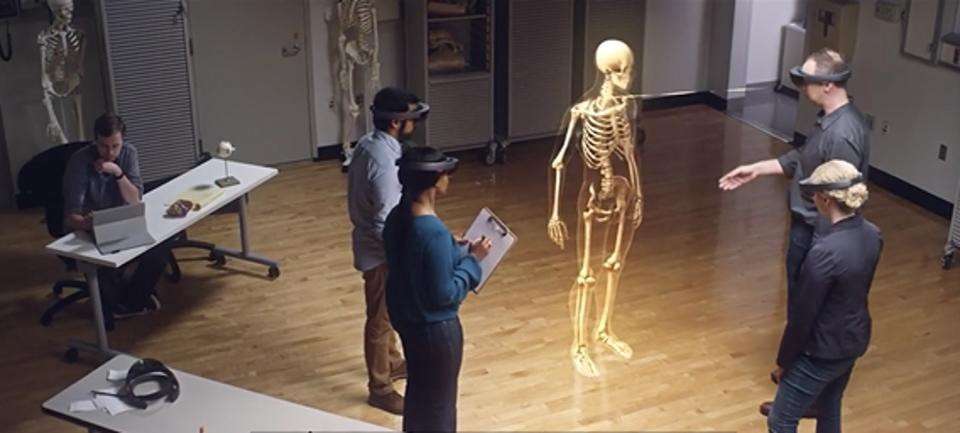
Prototyping the Solution
We developed a prototype of the solution that we had identified and reviewed with healthcare professionals and students.
To develop the prototype, we used VR development platforms such as Unity and Unreal Engine to create a prototype of the simulation.
Similarly, for AR application for patient education, we made use of AR development tools such as Vuforia or ARKit to create a prototype of the application.
The prototypes were designed to be immersive and engaging, and to provide realistic simulations of medical procedures.
The team also defined the business implications of the solution, which included the potential impact on patient care, the expected costs and benefits of the solution, and the resources needed to implement and maintain the solution.
Overall, prototyping the solution helped us to test and evaluate the functionality and usability of the solution, and to identify any issues that need to be addressed before the solution is implemented.

Usability Testing
We conducted user testing with a small group of 10 healthcare professionals and 10 students to gather feedback on the prototypes and iterate on the design. The testing consisted of usability testing, where the participants were asked to complete specific tasks using the AR/VR experiences, and heuristic evaluations, where the prototypes were evaluated against a set of usability principles.
Build-Measure-Learn-Build...
The user testing led to several design changes, including the addition of more interactive elements and the inclusion of more realistic simulations. The final AR/VR experiences were then tested with a larger group of 50 healthcare professionals and 50 students to evaluate their effectiveness in meeting the goals of the initiative.

Presentation of Findings
We created a presentation of their findings to share with as healthcare professionals and leaders from Thomas Jefferson University (TJU)
The presentation included the following elements:
- Introduction: An overview of the research, including the business need and the objectives of the research.
- Methodology: A description of the research methods used, including the sample size, data collection methods, and data analysis techniques.
- Results: A summary of the key findings from the research, including insights on the needs and preferences of healthcare professionals and students, and the potential uses of AR and VR technology in healthcare education and patient experiences.
- Prototype: A demonstration of the prototype solution that was developed as part of the research, including how it addresses the business need and the potential impact on patient care and education.
- Recommendations: A summary of the recommendations for implementing the solution, including the expected costs and benefits, and the resources needed to implement and maintain the solution.
The presentation might include video clips of the VR simulation in action, screenshots of the AR application, or infographics to illustrate key findings and recommendations.
Overall, the presentation of findings helped us to share the results with stakeholders, and to obtain feedback and input on the next steps for implementing the solution.
04. Key Insights
The in-depth interviews revealed several themes related to the user experience of AR/VR technology. These included:
- Engagement: The immersive nature of the technology was seen as a major benefit, with participants reporting that it kept their attention and made the learning experience more enjoyable.
- Realism: The simulations were described as realistic and lifelike, providing a sense of authenticity to the learning experience.
- Practice: The ability to practice skills and procedures in a safe, simulated environment was seen as a valuable aspect of the technology.
- Accessibility: The technology was perceived as being accessible and user-friendly, with a relatively short learning curve.
- Healthcare professionals and students were generally familiar with AR/VR technologies and saw their potential for use in healthcare settings.
- The participants reported that they would be interested in using AR/VR experiences for training and education purposes.
- The participants expressed a need for more hands-on experience for students through simulations of patients.
- The participants also expressed a need for remote learning opportunities through virtual seminars held in an Immersion Room.
- The survey results showed that the majority of participants (80%) agreed or strongly agreed that the AR/VR technology enhanced their learning experience. Additionally, a significantly higher percentage of participants preferred using the AR/VR technology to traditional methods of learning.
05. Conclusion
Summary
The case study presented the DL Group's approach and findings in using AR and VR technology in healthcare education, which could potentially improve outcomes for students and provide immersive, interactive simulations of real-world situations.
Implications
The research has implications for healthcare education and patient experiences, providing insights on the potential of AR and VR in enhancing healthcare education and patient experience through the technology.
Recommendations
The study recommends further research on the implementation and effectiveness of AR and VR technology in healthcare education and patient experiences.
06. Future State
Future research directions
Discuss future research plans and areas of exploration for the DL Group, such as studying the long-term effects of AR and VR technology on student learning outcomes and patient experiences.
Next steps
Outline the next steps for the DL Group in terms of implementing the solution and continuing to research the use of AR and VR technology in healthcare education and patient experiences.
Potential scalability
Describe the potential scalability of the solution developed by the DL Group and the potential impact it could have on healthcare education and patient experiences on a larger scale.
Future considerations
Discuss any future considerations that need to be taken into account, such as advancements in AR and VR technology and potential ethical considerations.
AR and VR has a big role in greater knowledge retention and as the future state we looking into researching, building, measuring and learning the application of AR and VR in the the following use cases:
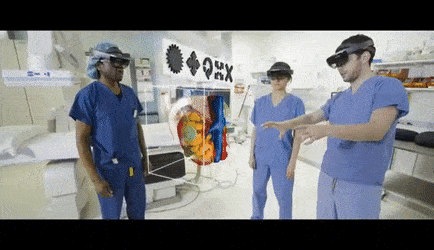
Surgical Planning & Simulation
AR and VR technology can be used in surgical planning and simulation to provide immersive, interactive simulations of real-world surgical procedures, allowing surgeons to practice and improve their skills before performing the actual surgery, leading to improved outcomes for patients.
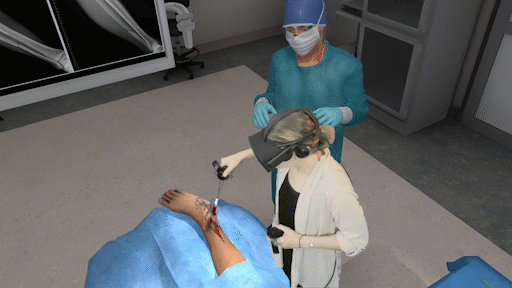
Surgical Training Guides
AR and VR technology can be used in surgical training guides, providing realistic simulations and interactive visual aids that allow students to gain hands-on experience and improve their surgical skills, leading to better-prepared surgeons and improved patient outcomes.
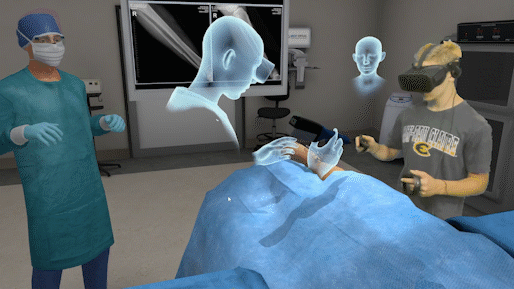
Remote Medical Assistance
AR and VR technology can be used in remote medical assistance to provide healthcare professionals with real-time, immersive visual and auditory information, allowing for remote diagnostics, consultation, and guidance, improving the quality of care for patients in remote or underserved areas.
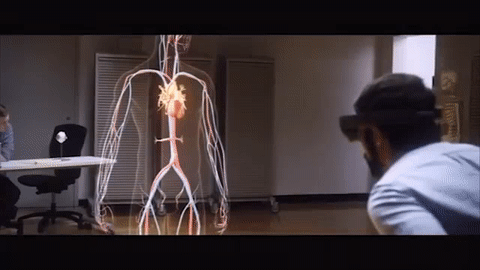
Patient Education
AR and VR technology can be used in patient education to provide immersive, interactive simulations of medical procedures, allowing patients to better understand and prepare for their treatment, leading to improved patient outcomes and satisfaction.
The findings in the above study showed the need for remote learning opportunities through virtual seminars held in an Immersion Room. In the following study we looked at ways to increase student engagement through the use of innovative shared space technology.
Enhancing Healthcare Education with Immersive Technology: A UX Research Case Study of the Immersion Shared VR Room
Stakeholder Partners
The leaders from Jefferson Health and TJU colleges who were involved in the project:
Director, CAESI, Jefferson College of Nursing
Director, Process Development & Operations, Jefferson Institute for Bioprocessing
Senior Associate Provost, Academic Enterprise
VP, Academic Strategy & Planning
01. Introduction
Background
The Immersion Shared VR Room is a technology developed to enhance healthcare education by offering simulations in various healthcare settings, 360° film capturing and playback, and empathy-building. Thomas Jefferson University has identified the need for this technology because of the limitations of traditional methods of healthcare education and the potential of virtual reality technology to enhance students' learning experience.
02. Methodology

Research Questions
The main research questions that guided the study were:
- How does the Immersion Shared VR Room compare to traditional methods of healthcare education in terms of student engagement and learning outcomes?
- How do students perceive and experience the use of the Immersion Shared VR Room for empathy-building and simulations in various healthcare settings?
- What are the main challenges and opportunities for real-time interaction and collaboration among students and staff in the Immersion Shared VR Room?

Participants
The study included 40 healthcare students from the Thomas Jefferson University. Participants were recruited through an online survey that was distributed to all healthcare students.
Data Collection
Data was collected through usability testing, interviews, and surveys. The usability testing involved observing users as they complete tasks in the Immersion Shared VR Room. Interviews were conducted with a subset of participants to gather information on their perceptions and experiences with the room. Surveys were distributed to all participants to gather information on their satisfaction and preferences.
- Usability Testing: Conducted a usability testing session with a group of healthcare students and have them complete a series of tasks in the Immersion Shared VR Room, such as navigating to a specific area, interacting with a virtual object, and completing a simulation. We then recorded the time it takes for them to complete the task, any errors they make, and feedback they provide.
- Interviews: We conducted one-on-one interviews with a subset of healthcare students to gather more in-depth information about their experiences with the room. We asked open-ended questions about the student's perceptions of the room and their experiences with it.
- Surveys: We developed a survey to gather information on healthcare students' satisfaction with the Immersion Shared VR Room and their preferences for different features. The survey included a combination of multiple-choice, likert scale, and open-ended questions, and was distributed to all healthcare students.

Data Analysis
Data was analyzed using thematic analysis and statistical analysis. The data was organized and coded to identify patterns and insights.
- Thematic Analysis: We conducted a thematic analysis of interview transcripts to identify patterns in how students describe their experiences with the Immersion Shared VR Room. The researcher read through the transcripts, identify meaningful units of meaning (e.g. words, phrases, sentences), and group them into themes (e.g. sense of realism, difficulty navigating, technical difficulties).
- Statistical Analysis: We conducted a statistical analysis of survey data to identify patterns in how students rate their satisfaction with the Immersion Shared VR Room. The researcher would use techniques such as mean, median, mode, and standard deviation to summarize the data and make inferences about the population. Additionally, correlation, chi-square, t-test can be used to analyze the data and compare.

03. Findings

The study found that the Immersion Shared VR Room was more effective than traditional methods of healthcare education in terms of student engagement and learning outcomes. Participants reported that the room provided a sense of realism and immersion that couldn't be achieved through traditional methods.

Students also reported that the use of the Immersion Shared VR Room for empathy-building and simulations in various healthcare settings was beneficial for their learning experience.

The main challenges for real-time interaction and collaboration among students and staff were related to the technical difficulties of using the room.
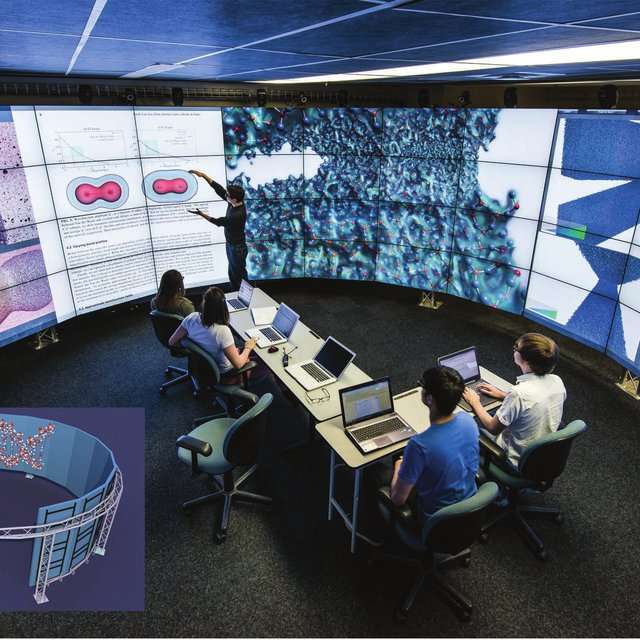
Requirement
An Immersion Shared VR Room, offers several benefits for healthcare education. It can accommodate large groups of students, including remote students, through 360° film capturing and playback.
This allows students to experience simulations in various healthcare settings or to follow the progression of a medical procedure from start to finish.
Additionally, immersive experiences can facilitate empathy-building by allowing students to experience scenarios from a patient’s perspective, such as those dealing with dementia. Overall, the Immersion Room has the potential to significantly enhance the learning experience for students at the Thomas Jefferson University.
04. Design Solutions

abc
Based on the findings, the design solutions were developed to improve the interaction and navigation of the room, and to enhance the sense of presence and engagement.

abc
The design solutions addressed the challenges and opportunities identified in the findings by improving the technical aspects of the room and providing.
05. Conclusion
Summarize the main findings and design solutions of the study.
Discuss the implications of the study for healthcare education and the use of immersive technology in other fields.
Identify areas for future research and development of the Immersion Shared VR Room.
How we use it?
Immersion Shared VR Room will be able to create a virtual classroom environment that allowed for real-time interaction among students and staff.
The Immersion Room would be equipped with a 360° screen that was split into multiple windows for presentations, live polls, and a montage of the students’ faces at life-size.
This setup allows staff to demonstrate medical procedures on a mannequin and provided students with a sense of presence and engagement. Overall, the Immersion Room would prove to be a valuable resource for remote teaching during and after the pandemic.
Future state – Other fields
This can be used in enginnering, construction management, architecture, fashion design, animation, game development, etc.
